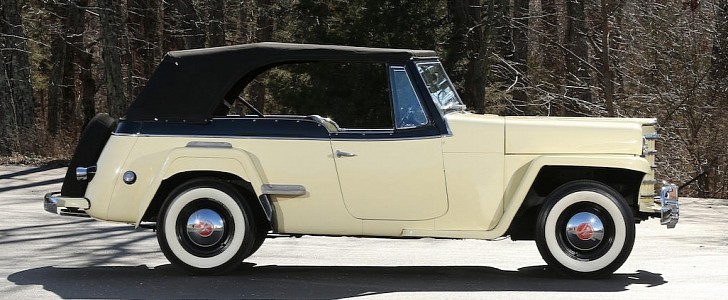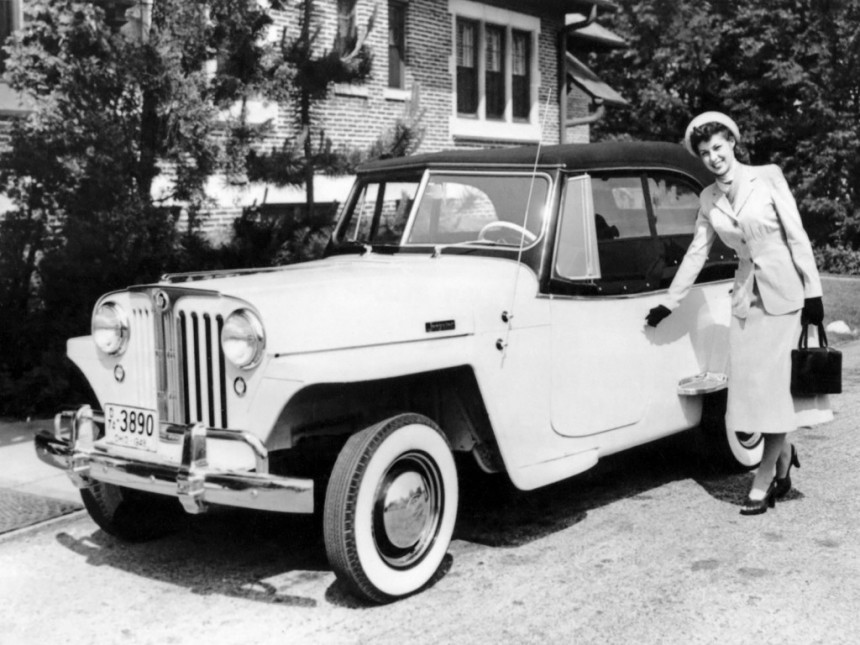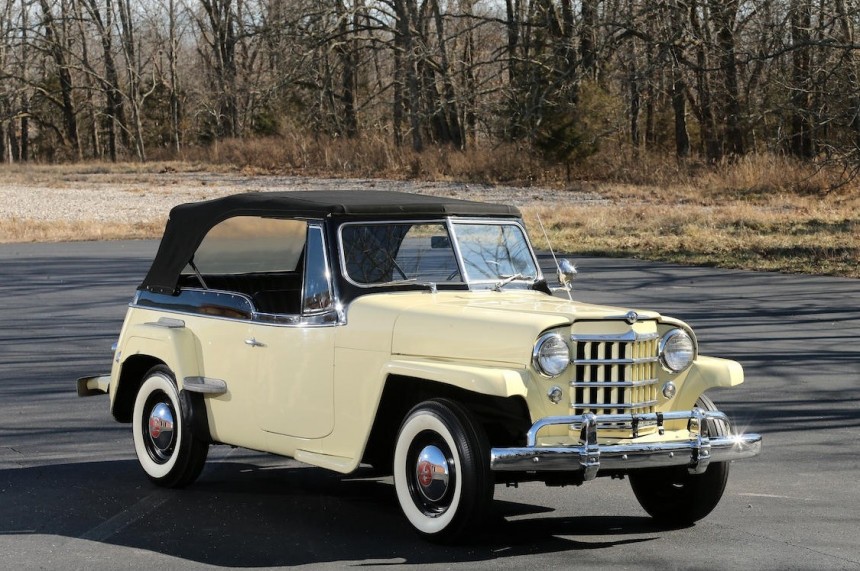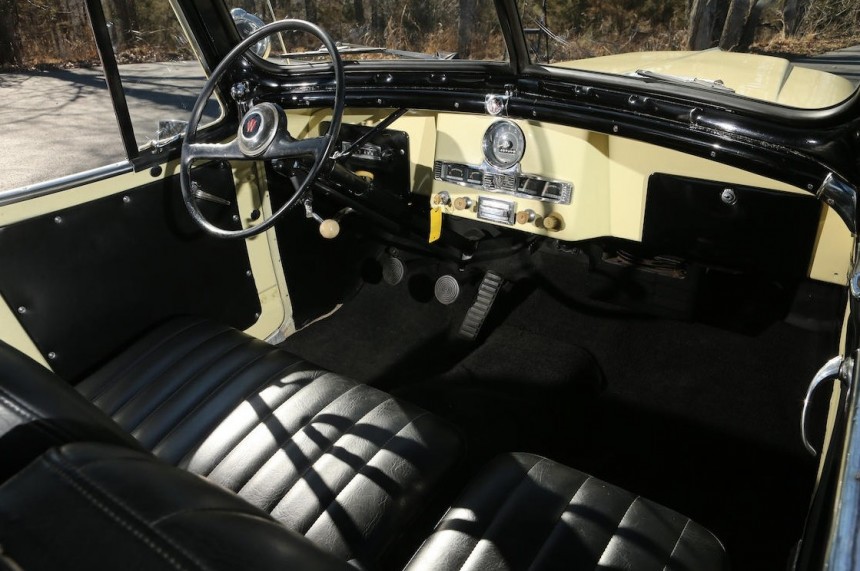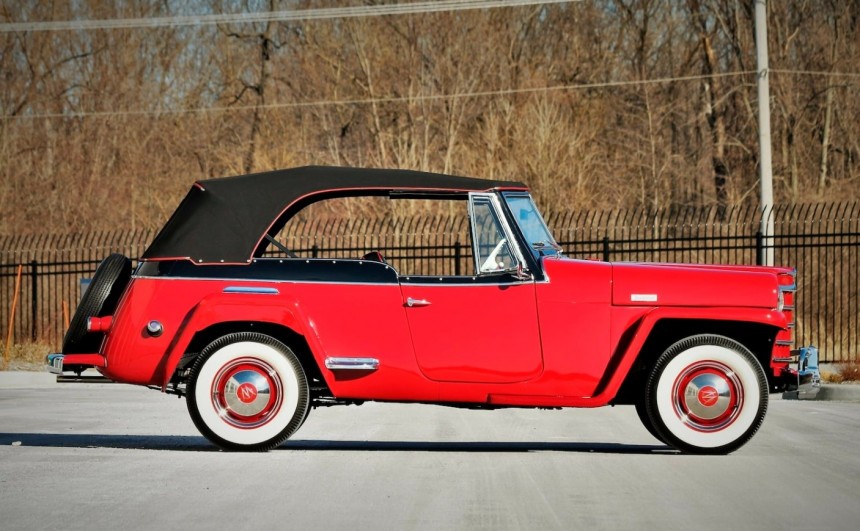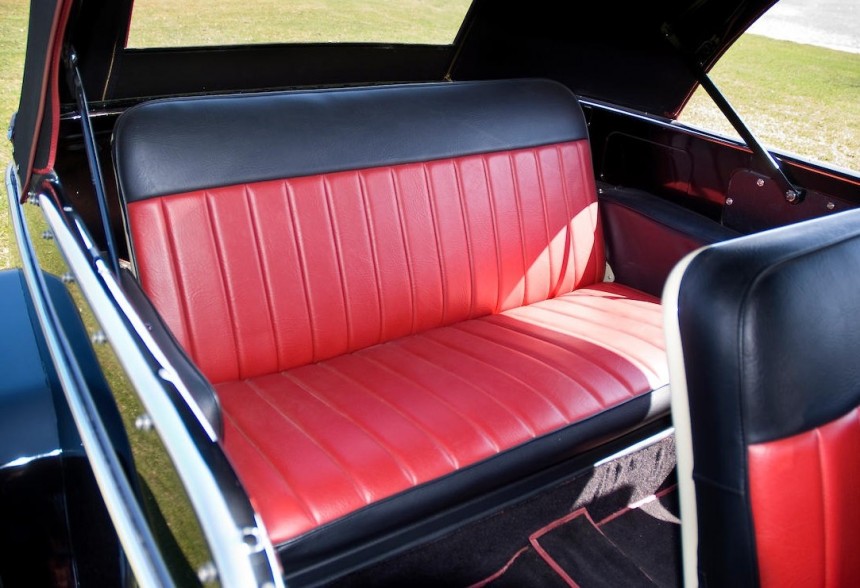June 2022 is Open Top Month here at autoevolution and we celebrate all things convertible. But while we're busy paying tribute to soft-top and retractable hardtop cabriolets the world over, we tend to forget about the primordial open-top body style: the phaeton.
It may have something to do with the fact that this layout lost its appeal almost 100 years ago, but it's an important part of automotive history. Not only was it used on almost every automobile in the early days, but it also graced some of the most beautiful cars ever built.
And even though it fell out of fashion in the 1930s, when closed cars and convertibles became widely available, the phaeton managed to survive until after World War II. That's when the Willys-Overland Jeepster, widely known as America's last true phaeton, was produced.
But before we dive into Willys' attempt to transform the rugged military Jeep into a car, let's discuss what makes the phaeton a unique body style. And what sets it apart from the more familiar convertible.
While the two layouts share some features, like a removable canvas top and a windscreen, the phaeton is not 100% weatherproof. Unlike convertibles, phaetons did not have sliding windows in the doors or the body, while the rigid or foldable roof provided limited protection against rain.
Sure, some phaetons came with side curtains or screens that could be installed once the roof was in place, but this solution was only suitable for short trips. Just imagine how awful it must be to drive an old phaeton in the winter when it's snowing and the temperature tends to drop below zero.
It sounds quite uncomfortable, but most of the early automobiles were open-air cars that had nothing more than a flimsy roof. It wasn't until the 1920s that steel bodies began to be mass-produced and the closed cars we are more familiar with became available to the average buyer.
As automakers began offering coupes, sedans, and convertibles that came with side windows, the phaeton body style disappeared almost entirely in the 1930s.
And when car production was revived after World War II, no major automaker returned to making phaetons. Except for Willys-Overland, that is!
Established in 1912, the company is known for a couple of pre-WWII cars that became popular with hot-rodders and drag racers. I'm talking about the 77 and the Americar. But Willys' most notable achievement came in the 1940s when it rolled out the MB army truck. After the war, the MB morphed into the civilian Jeep and the rest is history.
The Jeepster arrived in 1948, at a time when Willys was producing the civilian CJ-2A and a pair of larger Jeeps with station wagon and pickup truck body styles. And it was conceived to fill the missing automobile gap in the company's lineup.
Granted, the Jeepster was also a utilitarian vehicle, but it offered more car-like features that weren't usually available on the CJ. The list included whitewall tires, sun visors, wind wings, a locking glovebox, a cigarette lighter, and a continental tire with fabric cover, most of which were considered deluxe on other low-cost automobiles. And they came standard too.
But unlike other American cars of the era, the Jeepster also lacked side windows and it was only offered with a soft-top. So it was essentially a phaeton, even though it lacked the elegance of its pre-WWII ancestors.
But that wasn't the only thing that set it apart from other American vehicles of the late 1940s. The Jeepster also combined the ride height of a Jeep CJ with the convenience features of an automobile. Yup, you can forget about the AMC Eagle of the 1970s, the Willys Jeepster was America's first crossover. Albeit a rather crude one.
On the flip side, the Jeepster lacked the off-road capability of the CJ. Even though it shared many underpinnings with the latter, it came with rear-wheel drive only. So while it looked rugged and off-road capable, it was not.
The engine lineup was similar to other Jeep products from the era. The Jeepster debuted with the 134-cubic-inch (2.2-liter) Go-Devil inline-four in 1948 but received the larger, 148-cubic-inch (2.4-liter) Lightning inline-six in 1949. The four-banger was rated at 63 horsepower, while the six-cylinder delivered 72 horses.
In 1950, the Jeepster's final year on the market, Willys offered a larger, 161-cubic-inch (2.6-liter) version of the Lightning inline-six good for 90 horsepower.
Even though it was praised for its distinctive design and solid performance, the Jeepster wasn't as successful as Willys had hoped it would be.
The crossover did not catch on with the intended market due to poor advertising and Willys' small dealer network, while its limited practicality also kept regular Jeep customers away.
The Jeepster was also relatively expensive at $1,765 in 1948 (equivalent to about $20,000 in 2022) and potential customers were unhappy about the lack of roll-up door windows, which resulted in poor all-weather protection. We could say that the dated phaeton body style was an important factor in the Jeepster's demise.
Following a somewhat successful first year with 10,326 units sold, the Jeepster moved only 2,960 examples in 1949. Willys sold a further 5,836 cars in 1950 before putting an end to the nameplate. Total production included 19,132 examples.
The name returned in 1966 as the Jeepster Commando under Kaiser-Jeep ownership. But unlike the original Jeepster, the Commando was a convertible pickup with roll-up windows and an available hardtop.
Come 2022 and the Willys Jeepster is not a highly desirable classic, but it enjoys a cult following among fans of early Jeeps and odd vehicles. And while it gets some recognition as the last true American phaeton, it doesn't get much credit as a proto-crossover.
And even though it fell out of fashion in the 1930s, when closed cars and convertibles became widely available, the phaeton managed to survive until after World War II. That's when the Willys-Overland Jeepster, widely known as America's last true phaeton, was produced.
But before we dive into Willys' attempt to transform the rugged military Jeep into a car, let's discuss what makes the phaeton a unique body style. And what sets it apart from the more familiar convertible.
While the two layouts share some features, like a removable canvas top and a windscreen, the phaeton is not 100% weatherproof. Unlike convertibles, phaetons did not have sliding windows in the doors or the body, while the rigid or foldable roof provided limited protection against rain.
It sounds quite uncomfortable, but most of the early automobiles were open-air cars that had nothing more than a flimsy roof. It wasn't until the 1920s that steel bodies began to be mass-produced and the closed cars we are more familiar with became available to the average buyer.
As automakers began offering coupes, sedans, and convertibles that came with side windows, the phaeton body style disappeared almost entirely in the 1930s.
And when car production was revived after World War II, no major automaker returned to making phaetons. Except for Willys-Overland, that is!
The Jeepster arrived in 1948, at a time when Willys was producing the civilian CJ-2A and a pair of larger Jeeps with station wagon and pickup truck body styles. And it was conceived to fill the missing automobile gap in the company's lineup.
Granted, the Jeepster was also a utilitarian vehicle, but it offered more car-like features that weren't usually available on the CJ. The list included whitewall tires, sun visors, wind wings, a locking glovebox, a cigarette lighter, and a continental tire with fabric cover, most of which were considered deluxe on other low-cost automobiles. And they came standard too.
But unlike other American cars of the era, the Jeepster also lacked side windows and it was only offered with a soft-top. So it was essentially a phaeton, even though it lacked the elegance of its pre-WWII ancestors.
On the flip side, the Jeepster lacked the off-road capability of the CJ. Even though it shared many underpinnings with the latter, it came with rear-wheel drive only. So while it looked rugged and off-road capable, it was not.
The engine lineup was similar to other Jeep products from the era. The Jeepster debuted with the 134-cubic-inch (2.2-liter) Go-Devil inline-four in 1948 but received the larger, 148-cubic-inch (2.4-liter) Lightning inline-six in 1949. The four-banger was rated at 63 horsepower, while the six-cylinder delivered 72 horses.
In 1950, the Jeepster's final year on the market, Willys offered a larger, 161-cubic-inch (2.6-liter) version of the Lightning inline-six good for 90 horsepower.
The crossover did not catch on with the intended market due to poor advertising and Willys' small dealer network, while its limited practicality also kept regular Jeep customers away.
The Jeepster was also relatively expensive at $1,765 in 1948 (equivalent to about $20,000 in 2022) and potential customers were unhappy about the lack of roll-up door windows, which resulted in poor all-weather protection. We could say that the dated phaeton body style was an important factor in the Jeepster's demise.
The name returned in 1966 as the Jeepster Commando under Kaiser-Jeep ownership. But unlike the original Jeepster, the Commando was a convertible pickup with roll-up windows and an available hardtop.
Come 2022 and the Willys Jeepster is not a highly desirable classic, but it enjoys a cult following among fans of early Jeeps and odd vehicles. And while it gets some recognition as the last true American phaeton, it doesn't get much credit as a proto-crossover.
